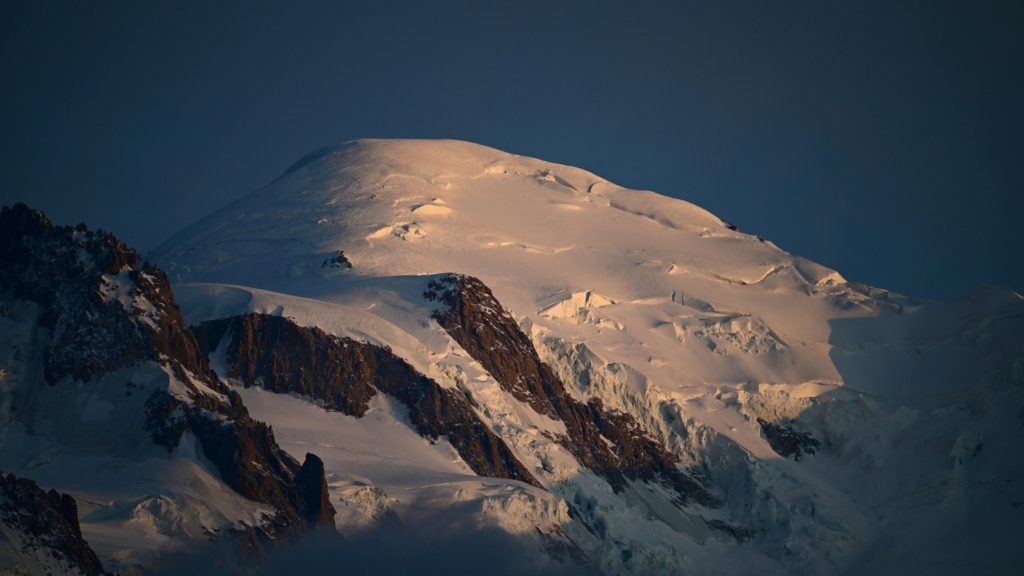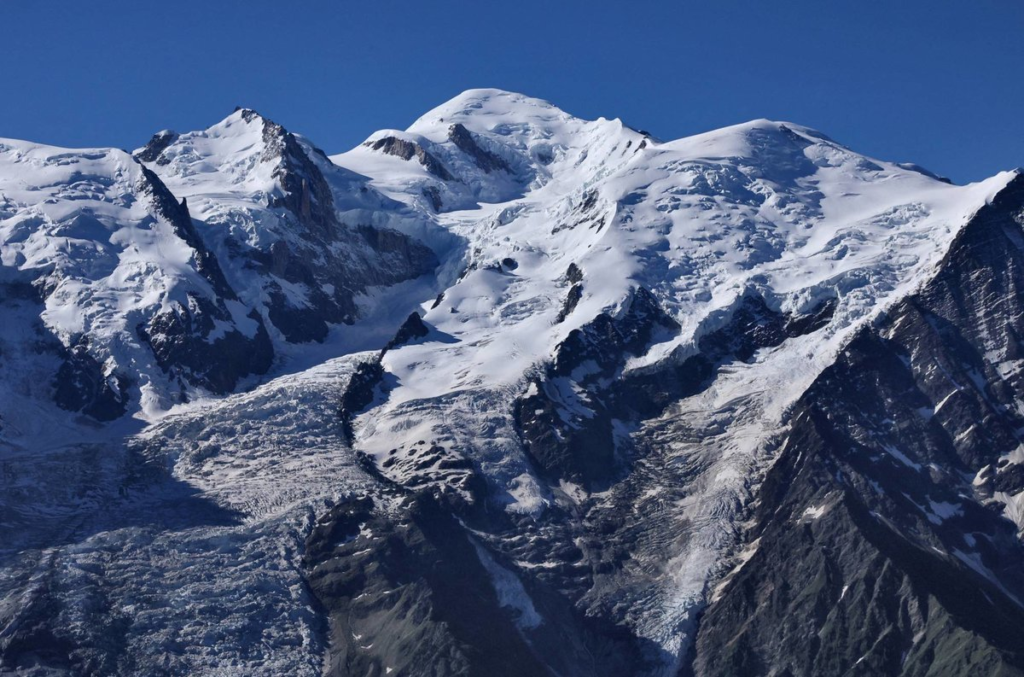
Mont Blanc, standing as the pinnacle of the Alps and the tallest mountain in Europe, has long captivated the imagination of adventurers, scientists, and nature enthusiasts alike. However, recent measurements have unveiled a surprising transformation – Mont Blanc has shrunk by 2.2 meters since 2021, marking its lowest recorded height in recent memory. This revelation sparks inquiries into the geological phenomena responsible for such alterations and the potential implications for the iconic mountain.
Historical Perspective

Mont Blanc, whose name translates to “White Mountain,” has been an enduring symbol of grandeur and natural beauty. Over the years, its majestic peak has been meticulously measured every two years since 2001. This consistent monitoring has provided invaluable data, offering insights into the dynamic nature of mountainous landscapes. The recent diminution of Mont Blanc’s height is particularly noteworthy, as it represents a significant departure from the historical trends observed over the past two decades.
The Measuring Process
The meticulous measurements were conducted by a team of surveyors from the Haute-Savoie regional administration, employing advanced techniques that included the use of drones. This modern approach allowed for a more precise assessment of Mont Blanc’s height and enabled scientists to capture the nuances of its ever-changing structure. The measurements revealed a reduction of 2.2 meters, prompting further investigation into the geological and environmental factors influencing this unexpected alteration.
Factors Influencing Height Loss
Several factors contribute to the fluctuating height of mountains, and Mont Blanc is no exception. Climate change, a ubiquitous force impacting diverse ecosystems, is a key player in altering the physical characteristics of the Earth’s landscapes. The Alps, home to Mont Blanc, have witnessed rising temperatures and shifting precipitation patterns, leading to changes in the mountain’s glacial structure.
The mountain’s summit, capped by a ridge of ice, has experienced noticeable variations. The once-sturdy ice covering is now undergoing accelerated melting, a consequence of global warming. The intricate dance between temperature, precipitation, and glacial dynamics is reshaping Mont Blanc, ultimately contributing to its reduced height.
Environmental Implications
The diminishing height of Mont Blanc raises concerns about the broader ecological consequences for the Alps and beyond. As one of the most iconic mountain ranges globally, the Alps play a crucial role in regulating weather patterns, supporting biodiversity, and providing freshwater resources. The accelerated melting observed on Mont Blanc could signify broader issues affecting the delicate balance of mountainous ecosystems.
Additionally, the shrinking of Mont Blanc’s glaciers contributes to the rising sea levels, posing a global threat with far-reaching consequences. Understanding the environmental implications of such changes becomes imperative in developing strategies to mitigate and adapt to the evolving conditions of our planet.
Scientific Significance
Mont Blanc’s height loss offers scientists a unique opportunity to delve deeper into the interconnected dynamics of climate change, glacial retreat, and geological transformations. The Alps, often considered a barometer for climate change impacts on mountainous regions, become a living laboratory for researchers to comprehend the intricacies of Earth’s response to environmental shifts.
Detailed analysis of Mont Blanc’s alterations can contribute to refining climate models, enhancing our ability to predict and respond to similar changes in other mountainous areas globally. The scientific community’s vigilance in monitoring Mont Blanc’s transformation underscores the importance of sustained research in elucidating the complexities of our planet’s evolving landscapes.
Tourism and Cultural Impact
Mont Blanc’s allure extends beyond its geological significance; it is a cultural and touristic icon drawing millions of visitors annually. The shrinking of its peak might alter the visual landscape, impacting the experience of those who traverse its slopes and marvel at its grandeur. Tourist-dependent economies in the surrounding regions may also feel the effects of these changes, necessitating adaptive strategies to maintain the region’s allure despite the transformations.
Conclusion
Mont Blanc’s recent height loss serves as a poignant reminder of the far-reaching consequences of climate change on our planet’s most majestic landscapes. As we witness the tangible effects on this iconic mountain, it becomes imperative to intensify global efforts towards sustainable practices, climate change mitigation, and environmental conservation. Mont Blanc, with its ever-changing stature, beckons humanity to reflect on our relationship with the environment and take collective action to preserve the natural wonders that define our world.
